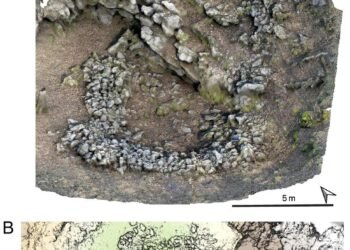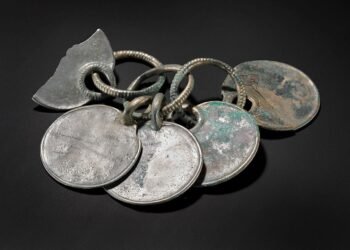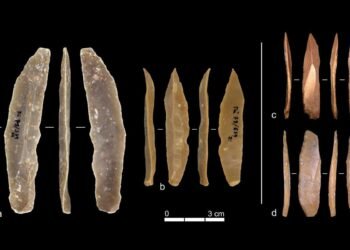During excavations at Midas Castle, a significant ancient site located in Eskişehir, central Turkey, archaeologists, led by Associate Professor Dr. Yusuf Polat from Anadolu University, uncovered ancient ovens, hearths, and other important artifacts believed to date back to the 7th century BCE, when the Phrygians, an ancient Anatolian civilization, inhabited the region.

The excavation, which resumed in 2022 after a 71-year break, covers a 26-hectare (88-acre) area within the Midas Valley, home to the renowned Yazılıkaya Monument. This year, the team focused on the “Agdistis sacred area,” a plateau on the upper part of the site, where they unearthed structures linked to Phrygian religious practices. These findings include hearths and ovens used for cooking sacrificial animals and baking bread during religious rituals.
“For the first time, we identified the presence of hearths and simple stone foundations in front of a Phrygian altar, used for ritual preparations,” Dr. Polat told Anadolu Agency. He explained that the sacred area dates back to the Middle Phrygian period, around the 8th-7th centuries BCE.
The most significant discovery at the site is a series of four rock basins carved into the rocky platform, alongside a rock idol representing Matar Kubileya, the Phrygian mother goddess. Matar, a central figure in the Phrygian religion, was worshipped as the goddess of nature, animals, and fertility. The presence of these basins and the idol suggests that the area was dedicated to rituals invoking prosperity and abundance. “The rock bowls and the presence of the idol near them are concrete evidence that this area was sanctified for abundance and fertility rituals,” Dr. Polat said.
The team also discovered Lydian ceramics dating to the 7th-6th centuries BCE and artifacts from the Roman period, indicating the site was used for centuries after the Phrygian era. Additionally, the researchers found rectangular hearths designed to burn from the top.
Beyond its religious significance, the Midas Castle area holds a much deeper history. The excavation revealed evidence that the region had been continuously inhabited for around 250,000 years, making it one of the longest-settled areas in the world. Surface surveys conducted by the team uncovered stone tools from the Lower Paleolithic period, suggesting that early human civilizations found fertile valleys and defensible terrain ideal for settlement.
More information: Anadolu University























